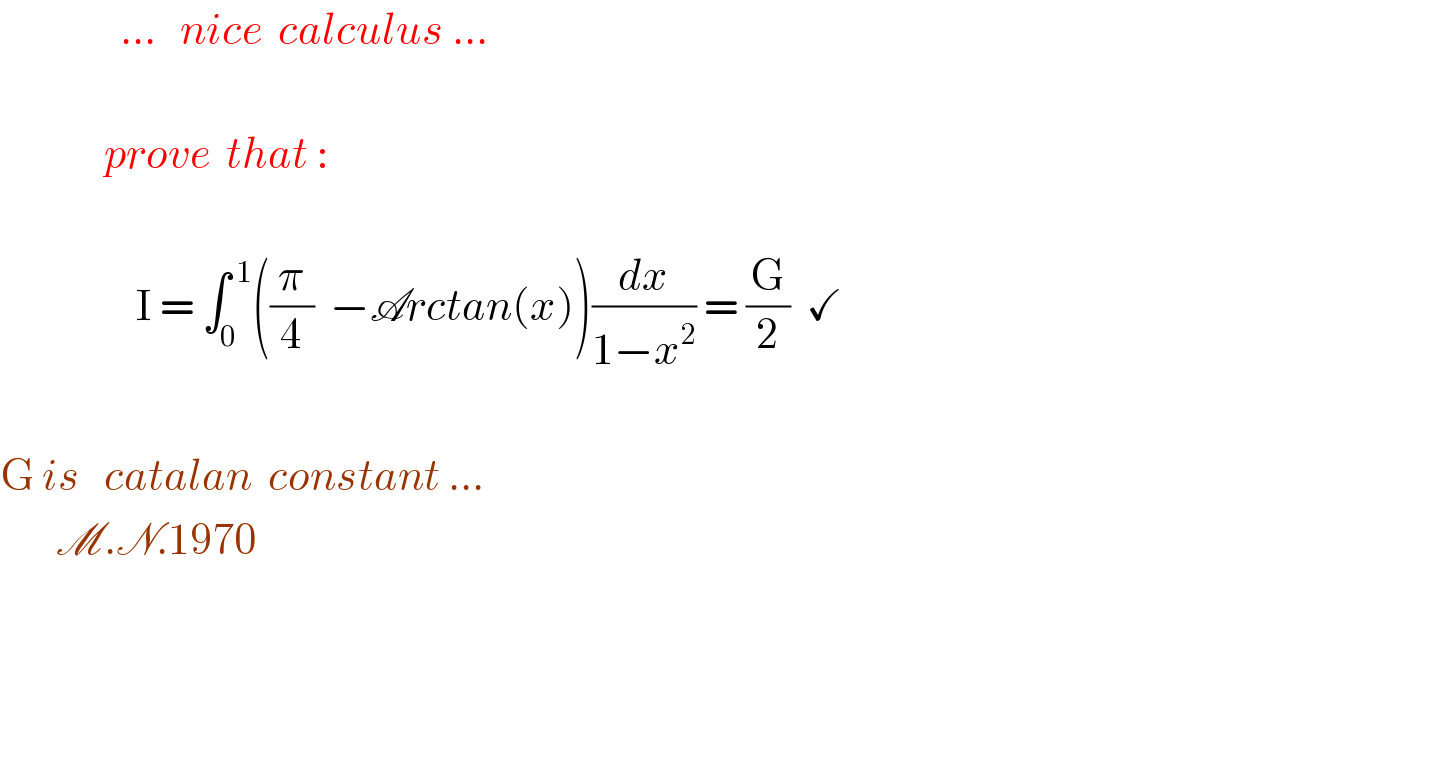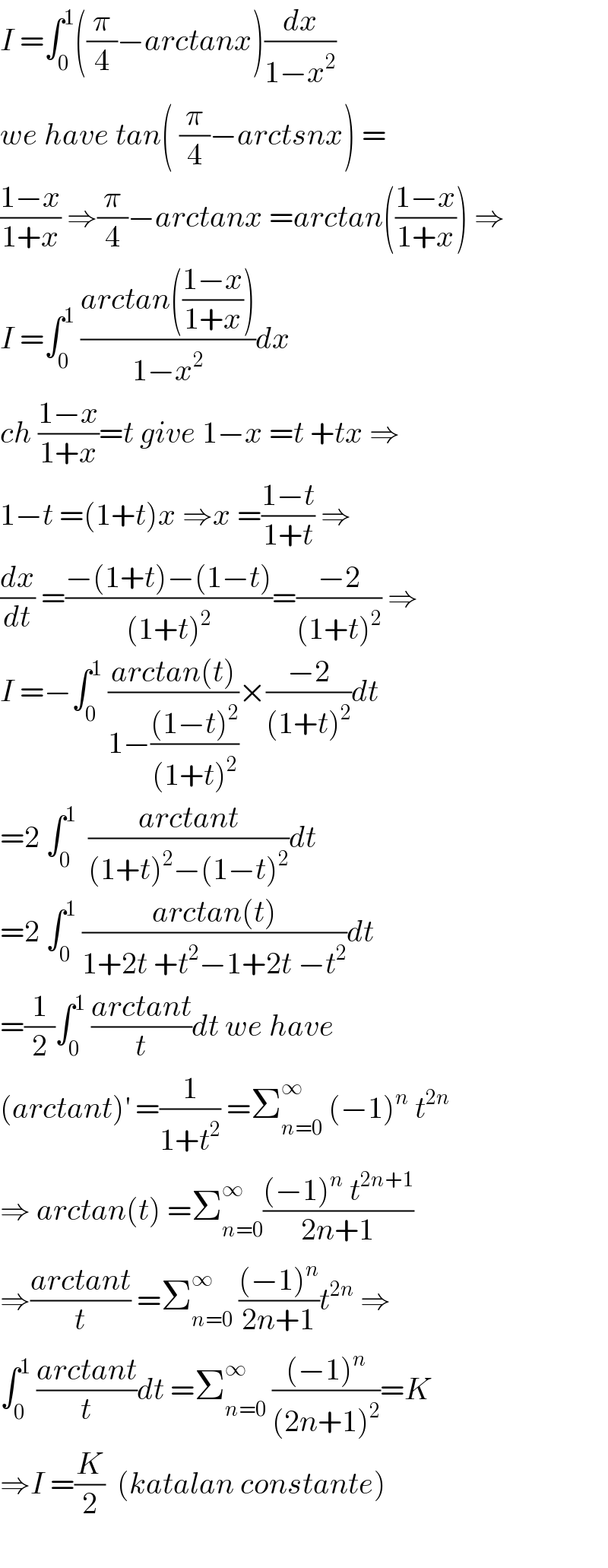
Question and Answers Forum
Question Number 116672 by mnjuly1970 last updated on 05/Oct/20

Answered by mnjuly1970 last updated on 05/Oct/20
![solution: I = ∫_0 ^( 1) (Arctan(1) −Arctan(x ))dx I=∫_0 ^( 1) Arctan(((1−x)/(1+x)))(dx/(1−x^2 )) I =^(( ((1−x)/(1+x))=t )) −2∫_1 ^( 0) Arctan(t)(dt/((1+t)^2 [1−(((1−t)/(1+t)))^2 ])) I = 2∫_0 ^( 1) ((Arctan(t))/(4t)) dt = (1/2) ∫_0 ^( 1) ((Arctan(t))/t)dt I =(1/2) ∫_0 ^( 1) Σ_(n=0) ^∞ (((−1)^n t^(2n) )/((2n+1))) dt=(1/2) Σ_(n=0) ^∞ (((−1)^n )/((2n+1)^2 )) I := (G/2) ✓✓ ...m.n.july.1970...](Q116673.png)
Answered by Bird last updated on 06/Oct/20

Commented by mnjuly1970 last updated on 06/Oct/20

Commented by Bird last updated on 07/Oct/20

